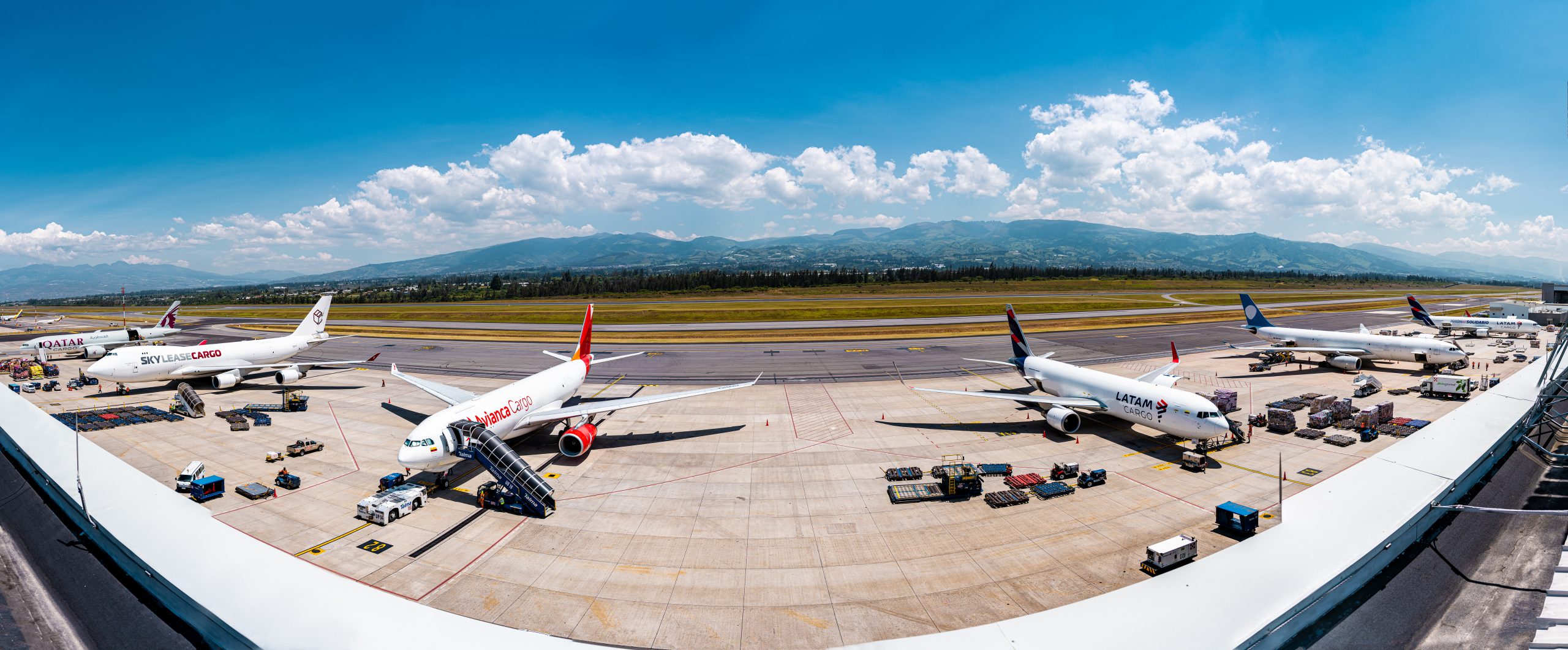Quito Airport ranks 5th in air cargo in Latin America and the Caribbean

• Mariscal Sucre is ranked 5th among major airports in the region.
• The airport that showed the greatest percentage increase was Quito International Airport, with a growth of 14.12%.
• 92% of cargo at Quito airport corresponds to flowers, one of the most emblematic export products of the country.
Quito’s Mariscal Sucre International Airport has reached a new milestone by ranking 5th in the ‘TOP 20 for air cargo in the region’, prepared by the International Council of Airports of Latin America and the Caribbean (ACI-LAC). This position underlines the airport’s outstanding performance in cargo transportation, consolidating itself as a benchmark in the sector at a regional level and standing out as the airport with the highest percentage growth in cargo in the region.
In 2023, Quito Airport recorded an impressive volume of 335,407 tons of cargo transported, surpassing the 293,904 tons reached in 2022. This 14.2% growth makes it the airport with the highest percentage increase in the region, according to ACI-LAC analysis. With this achievement, Mariscal Sucre has surpassed important airports in the region, such as Jorge Chávez International Airport in Lima, Ezeiza International Airport in Buenos Aires, Rio de Janeiro International Airport, among others. At the national level, Quito Airport is the main air cargo hub in Ecuador, processing up to 90% of all air cargo in the country.
One of the key factors behind this success has been the airport’s great performance in terms of cargo and the facilities provided by its facilities. Quito Airport is the only one in the country and one of the few in the region to have a cargo logistics center within the airport grounds. The logistics centre, operated by Tababela Cargo Center, carries out important processes such as centralised consolidation of export cargo, on the one hand, and customs clearance and temporary warehouse services for imports.
The other components of the logistics chain are an international cargo terminal with 13,000 square meters of usable area, where four cargo palletizing companies operate, and the cargo platform that can accommodate up to six high-capacity cargo aircraft simultaneously (four E-code and two F-code).
In 2023, the expansion of the export cargo terminal was completed, adding 2,880 m2 to the cargo entry and processing areas, as well as to the truck maneuvering area. These improvements have boosted operational efficiency, optimizing processes and facilitating the sustained growth of the airport.
An increase in the volumes of cargo transported is expected for 2024. A notable example was the 2024 Valentine’s Day peak season, which saw a historic record of 26,466 tons of cargo transported, a 17.3% increase over the same season in 2023. Currently, the airport has the operation of 15 cargo airlines, which benefit from its modern facilities.
Ramón Miró, president and CEO of Corporación Quiport, commented: “The great performance of air cargo is a reflection of the commitment and continuous effort of all the actors involved in the airport’s cargo logistics chain, who have achieved high levels of efficiency in the operation. Quiport has been making a permanent effort to improve our facilities and services, as well as to bring more cargo airlines to our airport.
“We are proud to see how Mariscal Sucre Airport is consolidating itself as a key player in air cargo transportation in the region, contributing to the country’s economic development and Ecuador’s connection to the world,” he concluded.
For more information on the analysis carried out by ACI-LAC, interested parties can visit the following link: https://aci-lac.aero/horus/news/el-trafico-de-pasajeros-en-aeropuertos-de-america-latina-y-el-caribe-represento-el-84-del-total-global-en-2023
